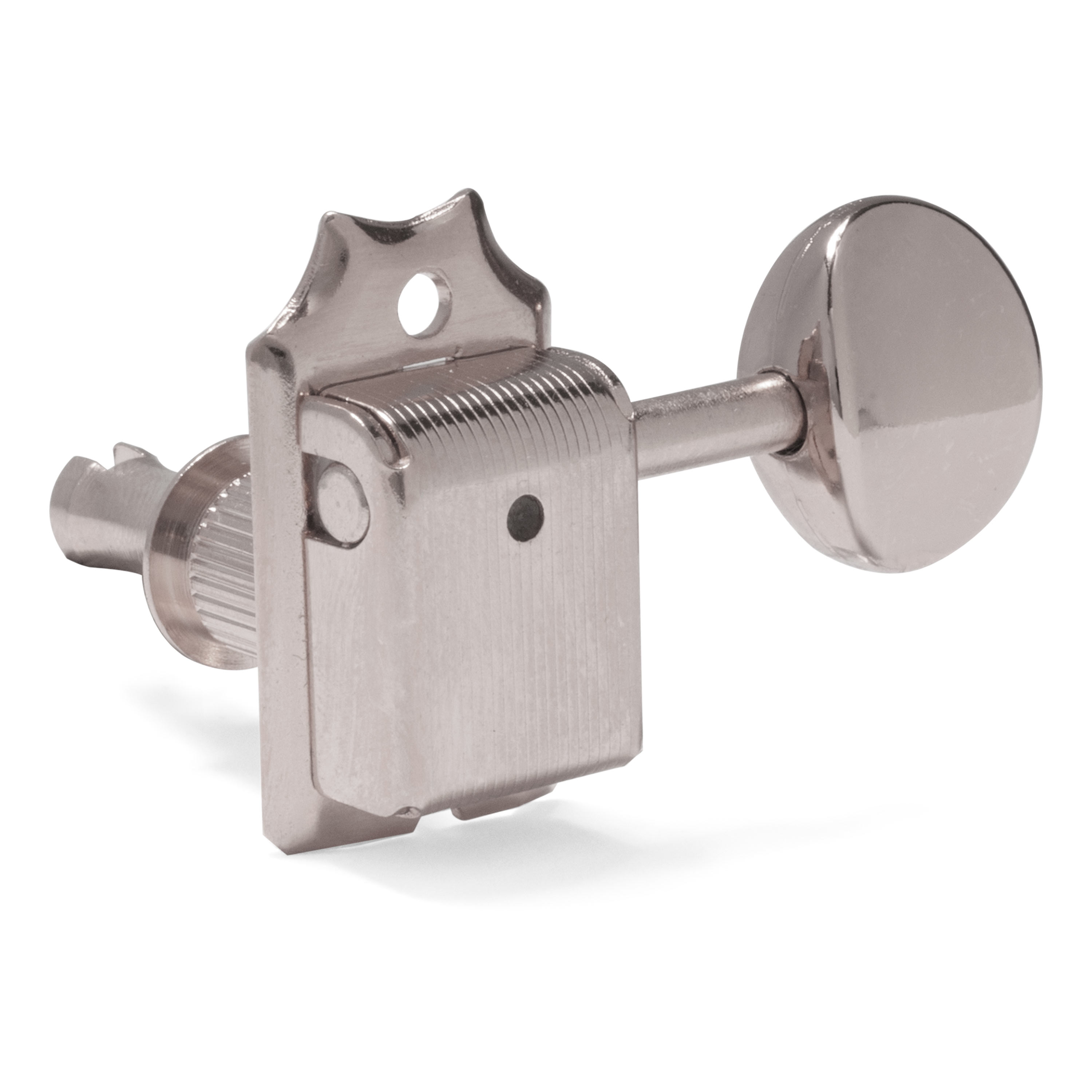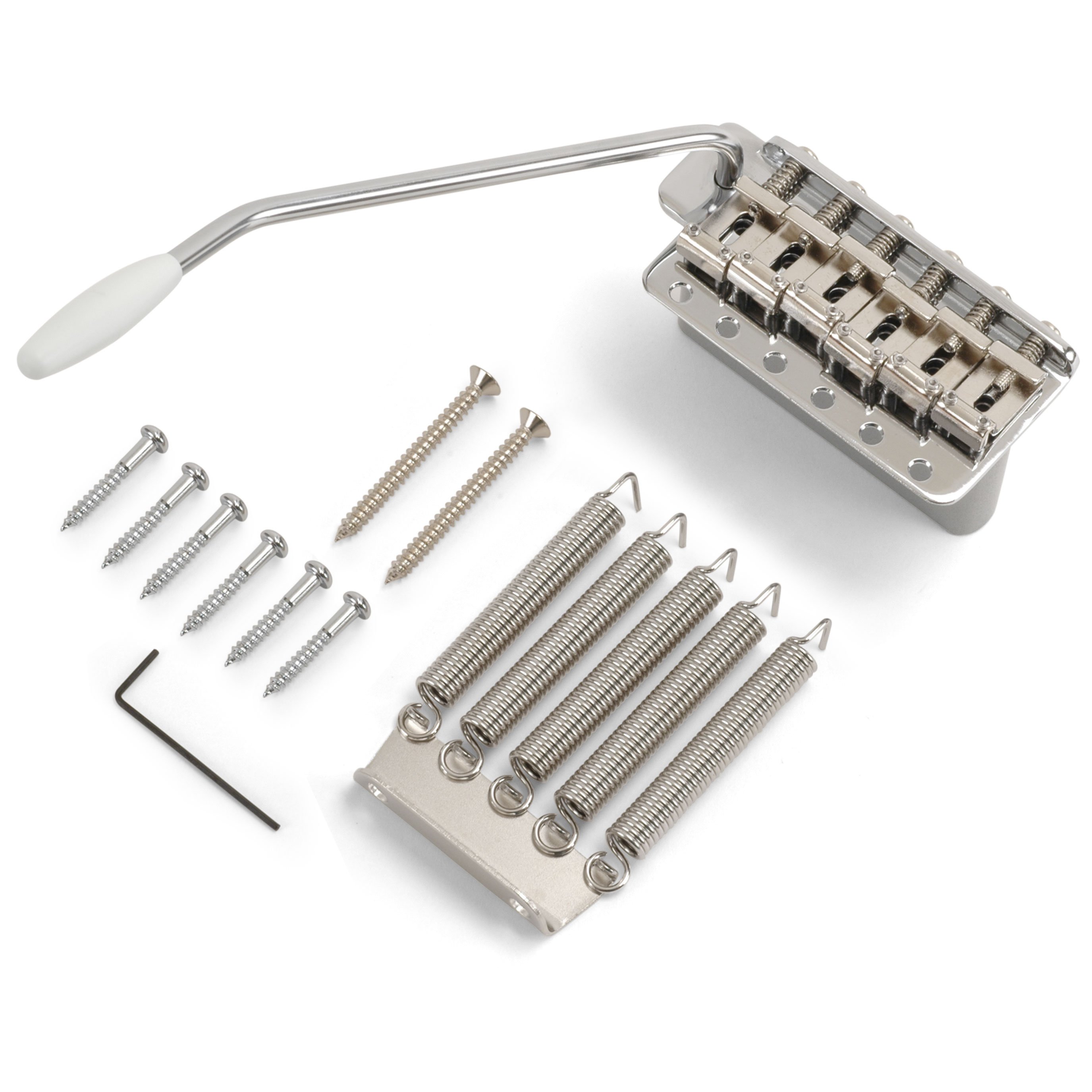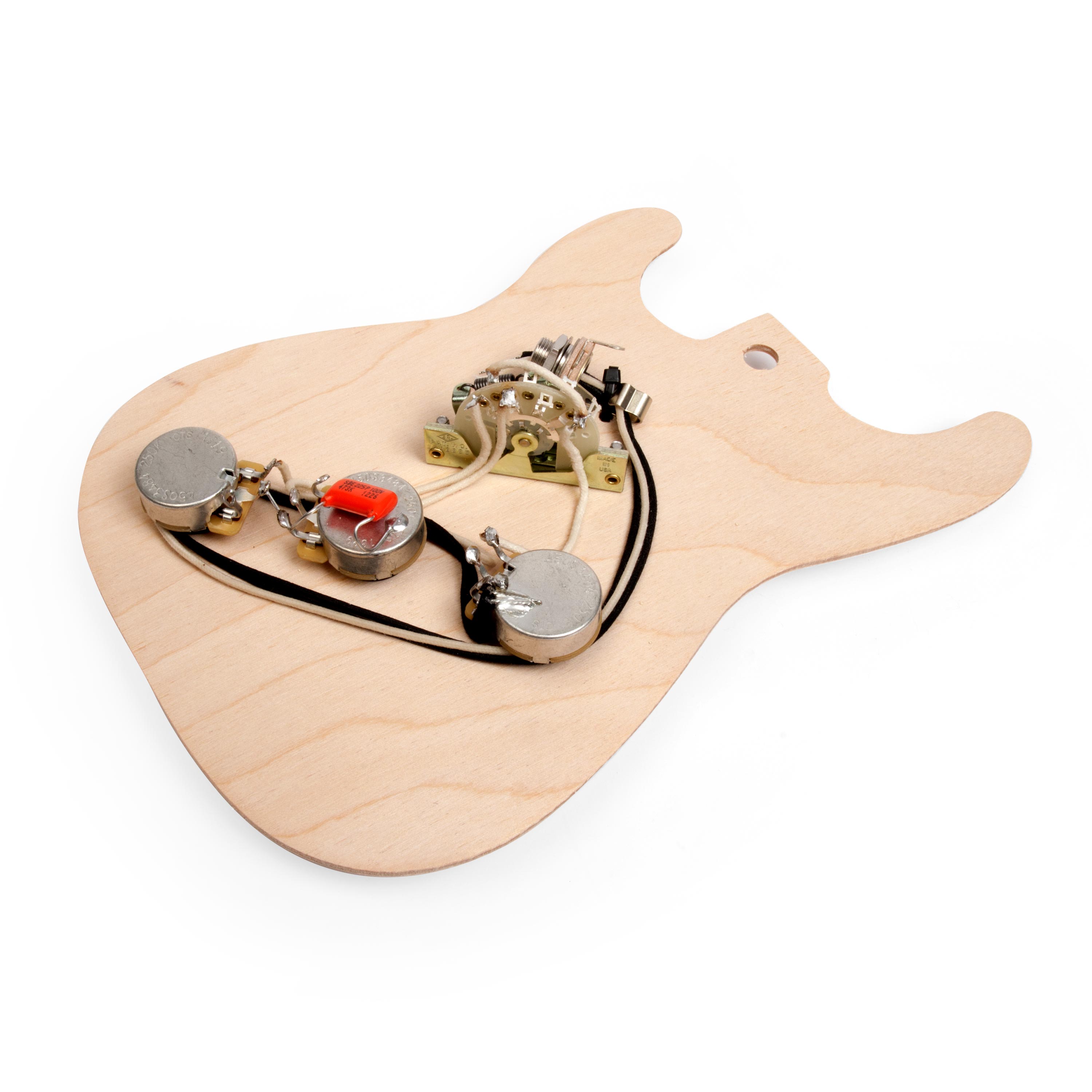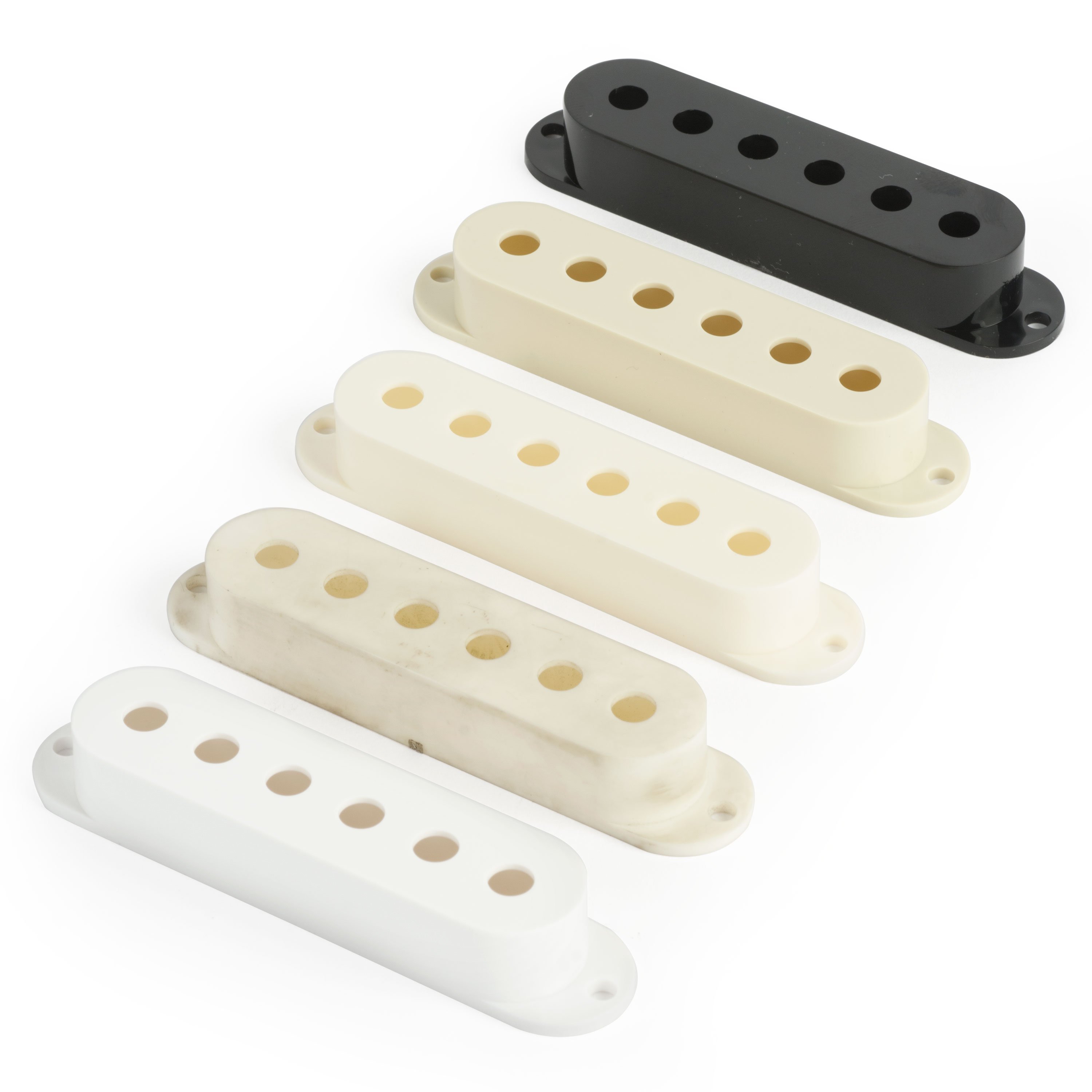Is this '62 Strat genuine and all original?
Issue 322 January 10, 2019
This is a genuine 1962 Strat, but how much of it is original? It's been refinished, and a refin has a big impact on the value of a vintage guitar. What else about this Strat has been changed? Erick Coleman shows how he figured this out.
What's changed other than the color?
- Clues that the neck has been partially refinished too
- Identifying period-correct Kluson tuners
- Recognizing original bridge saddles vs. reissues
- Evidence that the wiring has been carefully kept intact
Video Transcription
[on-screen text reads: StewMac tools + ideas for guitarmaking. Is this '62 Strat the Real Thing?]
Erick Coleman: [Erick plays the guitar] Wow, this guitar is awesome. My friend Tom brought this 1962 Fender Stratocaster in for a re-fret. He picked it up from the second owner who got it from a guy who won it new in a radio station contest out West back in 1962. How awesome is that? Especially a vintage one. This guitar is rumored to have been refinished at some point and was priced as such. Anytime you have a refinished instrument that brings up questions of the originality of the rest of the instrument. Often times things are changed. Pickups might be swapped out, pots or whatever, and all of that has a continuing negative effect on the value of the instrument. And so Tom's no vintage expert. He asked me if I would go ahead and just give it a thorough going over and make sure that all the parts and everything else on this guitar are indeed original to this instrument.
Analyzing the peghead for authenticity
So I like to start at the peghead. This is the spaghetti logo that Fender used from '54 up till 1966 when the transition from Fender to CBS took place. The bushings look correct, string tree looks correct. I'm going to shift under the D-string tuner because that'll tell me a little bit about the age of the Kluson. Kluson during this period had a single line down the back which said Kluson Deluxe stamped into it, and on the underside of the tuners [on-screen text reads: Restoration Version Gotoh Vintage-Style Tuners - stewmac.com] there should be a patent number. And there it is, D169400. Another little interesting thing about this shot is you see that hole right there, that little hole? It is an indexing hole that secured the neck blank to the template when they did the shaping. There's another one on the heel. When I look at the finish on the back of the peghead, I see some bubbles like trapped air that didn't make itself out.
And if you move down the neck a little bit, you see these weird little melted spots where it was probably hanging on a stand with some kind of rubber tubing or whatever on it, and that melted into the finish. And yeah, see, the front has a different look to it. The color's even different. The decal's sitting up on the finish like you'd expect to see it. So if I had to guess about the back, the owner of the guitar at one point wanted to see if he could get this melted spot of the lacquer repaired, and the person who did the work at the time just probably over-sprayed it.
Analyzing the body
One interesting thing here, a difference in the checking pattern. If you look at all the checking on the top, it's long and continuous, but if you look at it in the cutaways, it's kind of chunky. I'm guessing they didn't get all of that finish out of there and that they just sprayed this black over what would be the dark edge of the sunburst and that's why it's checked like that. They didn't reshape the contours or anything. So it all looks pretty solid. I'm going to go ahead and take the strings off.
Analyzing the bridge
Moving down to the bridge, we see a real well-worn piece. These old Fender saddles from '54 to around '71 said Fender and then had a patent pending stamp on them. And it used to be real easy to scope out the reissues or the replicas because they said Fender Fender. Here's an example of the Fender Fender saddle. These would've been used on all the reissues up until probably just a couple years ago. Now they do make a reissue Fender patent pending saddle, but they're really clean [on-screen text reads: Restoration Version: Gotoh Traditional Tremolo for Strat - stewmac.com], so if you look really close, you'll see that the word patent pending is actually into the string through hole there.
So that's the easiest way to spot these from the replica pieces. The strap buttons do look original. This one's kind of funny though. If you look real close there, you're going to see a drywall screw. And then when I look at this one, it's not a drywall screw, but you'll look and you'll see a flathead screw. So that one's obviously been replaced too. It's not uncommon for these strap button holes to strip out, so pretty frequently I'll see the wrong screw stuck in there. All right, we'll look at the serial number here, which during this period would've been on the neck plate. 89,200. In 1962, the Stratocaster serial numbers ranged from 72,000 to 93,000, so this checks out. So far, I'm liking what I'm seeing here. All of this hardware appears to be original to the guitar, which is awesome.
Looking at all the plastic parts, pre-'57 Stratocasters, the covers are stark white, knobs are stark white. And the shape is actually different. They're actually rounded off a little bit [on-screen text reads: Restoration Version: Strat Knobs] and the knobs are a little taller. Post '57, they're squared off more, just kind of a sharper look all the way around.
Analyzing the pickguard
The pickguard looks correct. It's celluloid, which is prone to shrinking. And if you look really close here, you can see that a lot of the screws don't line up with the holes perfectly. This one's in amazingly good shape, though. Usually, you'll see them and they'll be broken in a couple places, usually right across here. And then the space between the adjustment screw and the edge of the pickguard's usually broken there.
Analyzing the internals
The moment of truth, we're going to take this guard off and see what we see under there. We might see replaced components, we might see routs, who knows? Here we go. All right. Check it out. The person that did the re-fin on this masked off the cavities.
So what we're seeing in the bottom here is the original sunburst finish. That's pretty cool. And then looking at all the solder joints and stuff, it looks like we're pretty good. Pickups are what we would expect to see here. Black backs, no stamping or signatures or dates or anything on there. And I flip them over and look at the tops. They have the champered hole pieces. It's not just a straight rod, that is actually the corners broken on those [on-screen text reads: Restoration Version: Pickup Covers for Strat - stewmac.com]. So that is correct for this era as well. Tape is intact. Solder joints look remarkably intact. They look like they have not been touched. It seems a little weird to me [on-screen text reads: Restoration Version: Golden Age Pre-Wired Harness for Strat - stewmac.com] that these joints don't seem to be touched even though the guitar was clearly refinished. I want to take a look at the jack to see if it offers any insight on the solder joints in the control cavity.
Analyzing the jack
See, it's flat and it's not a bulbous solder like you saw inside the cavity. Looking close at the lugs on the jack [on-screen text reads: Restoration Version: Jack Plate for Strat - stewmac.com], it does look like the original joints have been broken at some point.
Analyzing the tremolo cavity
I'm going to take a quick look at the tremolo cavity now. I'm going to take the cover off. The string clog cover does look correct. And there, we're looking at that solder joint. I'm looking to see if the solder joint of the string ground has also been broken in the claw, and it clearly has. From the factory it would've been kind of a blob. And once you put heat on it, and especially trying to heat up that steel claw in order to attach solder to it, you got to really heat it up a lot. And so what this tells us is that the connections were unsoldered at the jack and at the string claw so they could remove the pickguard without having to unsolder any of the rest of the electronics.
The person who did the work probably didn't realize it at the time, but I commend whoever did the work for leaving the main control cavity intact.
Analyzing the neck
Okay, the last thing we're going to do is we're going to take the neck off so we can just check out the heel stamp. All right. Evidence of all sorts of weird shims and stickers. But that other indexing hole is probably right around there, I think. All right, looking at the date. A lot of folks think that the first number is the day of the month that the guitar was built, but what that actually indicates is the specific model that it was. And in this case, during this period of time, number two meant it was a Stratocaster or maybe even a Jazzmaster, which had a similar neck to it at the time. There is a whole list of the different things.
So that is not the date, that's actually indicates that this neck was going on a Stratocaster. Then you have the date, October '62, and then B stands for the width of the neck. I'm thinking this is the neck that came on it.
The conclusion
Okay, Tom, as you knew going into it, this strap has been refinished, but luckily the job is really good and it looks at home on this guitar. And what's super cool is all the parts and electronic components, with the exception of a couple screws, appear to be the same ones that the guitar left the factory with. So that's awesome. You've got a player grade Strat, and I can't wait to get it re-fretted and back in your hands.
Information on all these little tidbits, whether it's serial numbers or tuners, can be found in a variety of resources. There's a lot of books about Fender and the Stratocaster. You can find this information in there. A lot of incredible information online. Guitarhq.com, which is particularly resourceful. Check all that stuff out. You'll learn a lot about the instruments that you have. If you like what you saw in this video and any of our other videos, subscribe to our YouTube channel because we've got a lot more where this came from.





